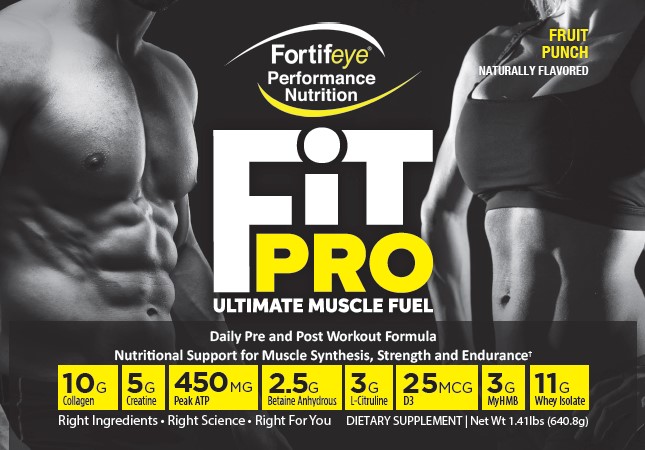Glaucoma, often known as the “silent thief of vision,” is a condition that typically develops without noticeable symptoms such as pain or blurred vision until it has progressed significantly. It is the second leading cause of blindness worldwide. The primary approach to treating glaucoma currently involves reducing intraocular pressure to an acceptable level in order to minimize damage to the optic nerve and prevent blindness. Optometrists and Ophthalmologists utilize a combination of oral and topical medications, as well as various surgical interventions, with some procedures being minimally invasive while others are more invasive. Many integrative primary eye care providers advocate for minimizing the use of surgery and medication whenever possible. The availability of evidence-based nutrients that can support optic nerve health and potentially slow down the progression of glaucoma would be highly beneficial.
This article will specifically concentrate on the role of omega-3 in relation to glaucoma. Omega-3 is among the most extensively researched nutrients, with numerous publications highlighting its positive impact on overall health in various aspects. Extensive studies consistently confirm the favorable effects of omega-3 on heart health, brain function, joint health, eye health, skin, hair, muscles, and more. Omega-3 is widely acknowledged as one of the top nutrients for promoting overall eye health. Knowledgeable healthcare professionals frequently recommend omega-3 for conditions such as dry eye, diabetic retinopathy, macular degeneration, and various inflammatory eye conditions. Presently, there is emerging evidence suggesting that glaucoma, being a significant eye condition, may also experience benefits from precise dosages and appropriate forms of omega-3 supplementation.
In the past ten years, a significant volume of data has surfaced regarding natural and nutritional treatments that show promise in reducing intraocular pressure and offering neuroprotection to the optic nerve, nerve fiber layer, and ganglion cell layer. Several recently highlighted nutritional components for supporting glaucoma encompass Mirtogenol (a blend of pine bark extract and bilberry), Cognizine (a patented citicoline variant), omega-3 fish oil, saffron, Neumentix (a spearmint extract), and diverse variations of niacinamide (NMN, NR, and NAM).
Dr. Michael Lange of the Lange Eye Institute in The Villages, FL has been using combination of rTG form of Omega 3 fish oil, other specific evidence-based nutrients, life style changes, exercise, diet and weight management to help his glaucoma, diabetic and macular degeneration patients. Dr. Michael Lange state “ it is amazing how the human body can react positively to these changes”.
Recent research findings indicate that a daily intake of 1500 mg (combined EPA and DHA) of omega-3 fish oil can lead to a significant reduction in intraocular pressure over a three-month period in young individuals without glaucoma. These studies revealed an impressive 8% decrease in intraocular pressure following the supplementation with omega-3 fish oil. Additionally, a study conducted on rats demonstrated a remarkable 23% reduction in intraocular pressure during the subjects’ omega-3 regimen. Although the precise mechanism through which omega-3 influences glaucoma is not yet fully elucidated, several theories propose how omega-3 may effectively lower eye pressure and potentially provide neuroprotection to the optic nerve.
https://www.ncbi.nlm.nih.gov/pmc/articles/PMC5931260/
A study has demonstrated that patients with glaucoma witnessed enhanced visual fields after undergoing three months of omega-3 supplementation. .
https://onlinelibrary.wiley.com/doi/10.1111/j.1600-0420.1999.tb01152.x
A correlation has been identified between glaucoma patients and reduced levels of omega-3 in their bloodstream. In a recent study, it was revealed that individuals who incorporate higher quantities of omega-3 into their daily diet exhibit a decreased likelihood of being diagnosed with glaucoma. https://jamanetwork.com/journals/jamaophthalmology/article-abstract/2666583?redirect=true
In a recent research publication from June 2023, a notable connection has been uncovered between elevated levels of diglycerides and triglycerides in the bloodstream and an increased susceptibility to glaucoma. Understanding this detrimental relationship between specific lipid abnormalities and glaucoma is crucial in formulating an integrated treatment plan for glaucoma patients. One effective approach to reducing these lipids is the appropriate utilization of omega-3 fish oil. Omega-3 fatty acids have demonstrated a significant capacity to lower blood triglyceride levels. However, the question remains unanswered as to whether naturally decreasing these lipids through omega-3 fish oil or medically through medication can effectively reduce the risk of glaucoma. While this concept appears logical, further studies are required to definitively establish this theory. Nevertheless, there exists substantial evidence supporting the consideration of omega-3 as a beneficial nutrient for individuals suspected of having or diagnosed with glaucoma. Omega-3 fish oil is generally safe when taken at recommended doses and is readily accessible at a minimal cost. https://www.mountsinai.org/about/newsroom/2023/patients-with-specific-types-of-lipids-may-be-at-higher-risk-of-developing-blinding-eye-disease
There is a significant disparity in the quality and efficacy of different omega-3 fatty acids. The majority of readily available over-the-counter omega-3 supplements exist in the form of ethyl esters. This particular form involves the bonding of ethanol to the omega-3 structure, necessitating daily liver metabolism to eliminate the ethanol and convert it into a triglyceride form that can be assimilated into the bloodstream. Ethyl ester omega-3 supplements are recognized for their instability, limited absorption, and susceptibility to rapid rancidity.
A highly researched and superior form of omega-3 is known as rTG or TG (re-esterified triglyceride). This particular form possesses a triglyceride backbone, facilitating more efficient absorption without the requirement of liver processing. Unlike ethyl esters, the rTG form of omega-3 does not impart a fishy taste or odor and is absorbed 3-4 times faster. The finest omega-3 fish oil products are sourced from Norway. Within the realm of eye care, Fortifeye Super Omega and Fortifeye Super Omega 3 Max stand out as highly recommended rTG form omega-3 fish oils, endorsed by numerous doctors.https://fortifeye.com/product/fortifeye-super-omega-3-max-dr/
When seeking a top-notch omega-3 fish oil supplement, it is crucial to verify that it is in the rTG or TG form and sourced from Norway. Furthermore, it is advisable to seek products that offer a dosage of 1600 to 2400 mg of omega-3 per two-gel cap servings. Eye care professionals, including optometric physicians, optometrists, and ophthalmologists, should strongly contemplate recommending omega-3 supplements to patients grappling with dry eye, macular degeneration, diabetes, and now glaucoma.




